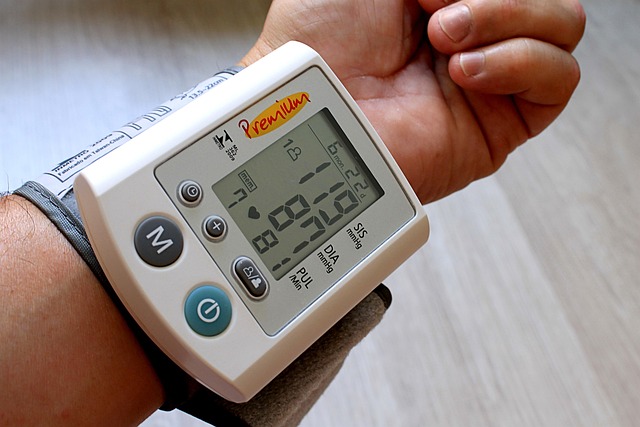Invisible Anti-Robbery Devices: Securing Possessions Discreetly
Rapid technological advancements have led to a surge in theft and counterfeiting of high-value items, prompting the development of innovative anti-theft solutions. Invisible anti-robbery devices, inte…….

Rapid technological advancements have led to a surge in theft and counterfeiting of high-value items, prompting the development of innovative anti-theft solutions. Invisible anti-robbery devices, integrating RFID tracking, infrared sensors, and advanced alarms, offer discreet yet powerful protection for sensitive areas like museums, galleries, and offices. These systems combat theft through stealthy shielding fabrics, data encryption hardware, and wallet protection devices, creating multi-layered defenses. While effective, challenges include installation costs, complexity, maintenance, and potential hinderance in emergency scenarios, requiring a balance between discretion and swift response.
In today’s digital era, safeguarding personal belongings has become a paramount concern. Traditional anti-robbery measures often leave visible traces, alerting potential thieves to their presence. This prompts a growing need for invisible anti-theft devices that offer discreet security without compromising aesthetics. This article delves into the imperative of these innovative solutions, exploring various technologies and analyzing the benefits and challenges they present in our quest for enhanced personal safety.
- Understanding the Need for Invisible Anti-Theft Devices
- Types of Technology Used in Anti-Robbery Systems
- Benefits and Challenges of Implementing Discreet Security Measures
Understanding the Need for Invisible Anti-Theft Devices

The rise of technological advancements has also fueled a significant growth in theft and counterfeiting activities. High-value items like luxury goods, electronic devices, and sensitive documents are increasingly targeted by criminals. Traditional anti-theft measures, while effective to some extent, often lack subtlety and can be easily detected, defeating their purpose. This is where invisible anti-robbery devices step in as a crucial solution. They provide an extra layer of security without compromising aesthetics or functionality, making them ideal for high-risk environments such as museums, art galleries, and corporate offices.
In today’s world, where digital information is as valuable as physical assets, securing data has become paramount. Laptop encryption software and robust lockdown mechanisms for safes are essential components of a comprehensive security strategy. However, invisible anti-theft devices go beyond these measures, offering discrete yet powerful protections against theft and counterfeiting. By integrating advanced technologies like RFID tracking, infrared sensors, and sophisticated alarms, these devices ensure that valuable items remain secure while maintaining an air of invisibility.
Types of Technology Used in Anti-Robbery Systems

Anti-robbery systems have evolved significantly, incorporating various technologies to deter and prevent theft. One of the most prominent advancements is the use of invisible shielding fabric, which acts as a stealthy barrier against unauthorized access. This fabric is designed to disrupt signals from RFID tags and NFC devices, making it difficult for thieves to locate and steal items equipped with these tracking technologies.
Beyond physical barriers, data encryption hardware plays a crucial role in anti-theft measures. By encrypting sensitive information stored on devices or within databases, this technology ensures that even if a theft occurs, the stolen data remains secure and unusable by criminals. Additionally, wallet protection devices have emerged as game-changers in personal security. These innovative solutions employ advanced sensors and alerts to notify users of potential theft attempts, providing an extra layer of safety for valuable items like wallets and purses.
Benefits and Challenges of Implementing Discreet Security Measures

Implementing discreet security measures, such as invisible anti-robbery devices, offers several significant benefits for businesses and individuals seeking to safeguard their assets. These advanced technologies provide a layer of protection that is virtually unnoticeable, deterring potential thieves without drawing attention. Wireless alarm systems, portable RFID scanners, and motion sensor detectors are examples of tools that can be seamlessly integrated into existing security infrastructures, enhancing overall safety while maintaining an unobtrusive presence. By employing these innovative anti-theft devices, businesses can mitigate the risk of theft, protect valuable inventory, and ensure the safety of their employees and customers alike.
However, despite their numerous advantages, there are challenges associated with deploying discreet security measures. One primary concern is the initial cost and complexity of installation. These advanced systems often require professional setup and calibration, which can be costly and time-consuming. Additionally, ensuring proper maintenance and regular updates is crucial to keep these devices operating at peak efficiency. Moreover, while discretion is a key advantage, it may also pose challenges during emergency situations, as responsive security personnel need clear visibility and access to employ effective countermeasures. Balancing the need for stealthy protection with swift response mechanisms remains an ongoing consideration in the realm of anti-theft technology.
Invisible anti-robbery devices offer a modern solution to an age-old problem, providing businesses with advanced security measures that deter theft without compromising customer experience. By leveraging innovative technologies like RFID, covert cameras, and motion sensors, these discreet systems create an impenetrable defense against shoplifters. While challenges remain in terms of cost and integration, the benefits of enhanced security, reduced losses, and increased customer confidence make invisible anti-theft devices a valuable investment for retailers looking to protect their inventory and maintain a competitive edge.







